To create oriental perfumes, you'll want to follow the classic 30-30-40 ratio: 30% top notes (citrus, spices), 30% middle notes (florals, amber), and 40% base notes (woods, resins). Start with a 1:1:1 blend of each category at 10% dilution in ethanol, then adjust based on your desired profile. Essential ingredients include vanilla, tonka bean, benzoin, and labdanum. The secrets to mastering oriental blends lie in understanding how these precious materials interact and mature.
Understanding Oriental Perfume Composition
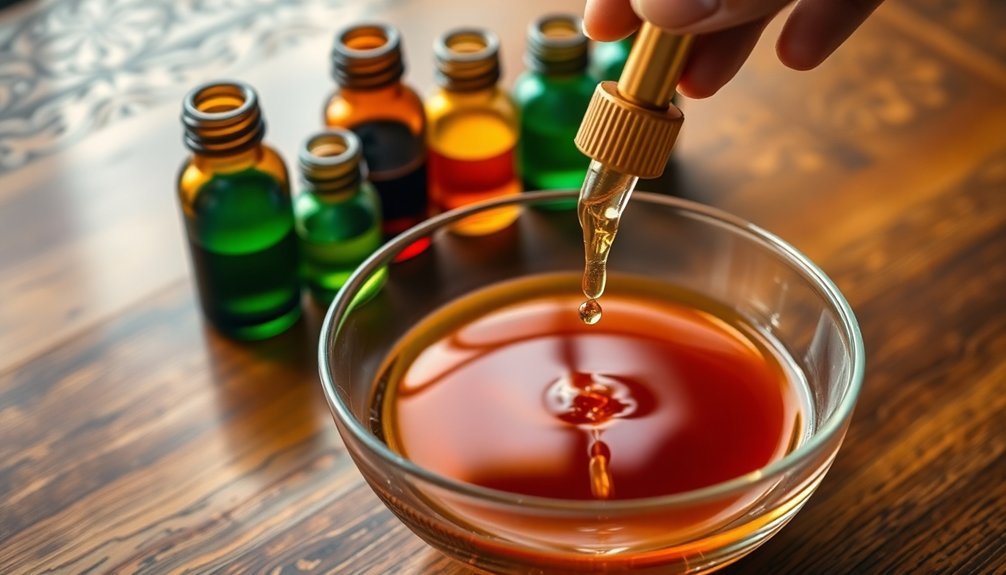
While oriental perfumes may seem complex at first glance, they're built around a distinctive foundation of warm, sweet, and resinous materials.
You'll find vanilla, tonka bean, and vanillin at the heart of most oriental compositions, creating that characteristic rich sweetness that defines the family.
Experts recommend reducing vanilla by 90% to prevent an overpoweringly sweet fragrance.
To achieve authenticity in your oriental blend, you'll need to incorporate classic resins like benzoin, frankincense, and opopanax.
These materials work alongside labdanum, myrrh, and styrax to create depth and complexity.
You can enhance your composition with iris for its powdery elegance or patchouli for additional earthiness.
When working with these ingredients, remember that classic oriental accords, like those found in Jicky and Shalimar, serve as excellent reference points for understanding proper balance and proportion.
The Art of Blending Oriental Notes
Mastery of oriental note blending requires understanding the fragrance pyramid's three distinct layers and how they interact.
You'll need to start with light top notes like citrus or spices, followed by heart notes featuring florals or amber accords, and finish with deep base notes of woods, musks, or resins.
When combining oriental notes, you'll want to select fragrances that share similar accords while maintaining balanced strength. A clearly defined objective should guide your selection of materials before beginning the blending process.
Start with small amounts using standardized droppers, and add modifiers gradually. Don't forget to use blenders like lavender to smooth transitions between notes, and incorporate fixatives such as musk or vanilla for stability.
Test your blends on strips and allow them to mature for several days.
Keep detailed records of your ratios and mixing order, so you can replicate or adjust successful combinations.
Essential Ratios for Oriental Fragrances
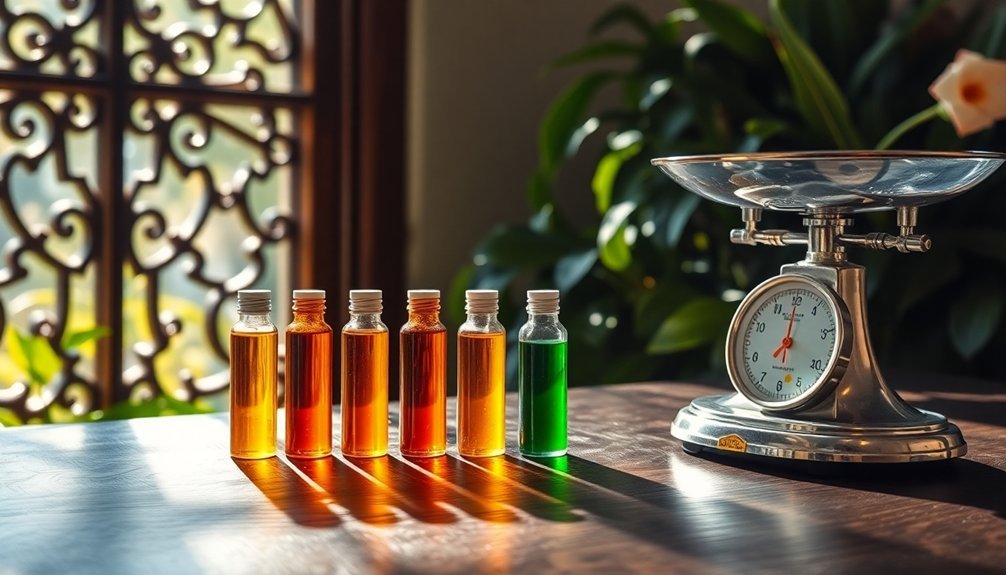
Three foundational ratios govern the creation of oriental fragrances, with each playing a vital role in the final composition. You'll find top notes like cloves and cinnamon making up the initial impression, while middle notes of vanilla and patchouli create the heart. Base notes of labdanum, sandalwood, and amber provide lasting depth. A resting period of 2-6 weeks allows the fragrance notes to fully develop and blend together.
| Note Level | Typical Parts | Key Ingredients |
|---|---|---|
| Top Notes | 30-35 parts | Cloves, Cinnamon, Bergamot |
| Middle Notes | 30-40 parts | Vanilla, Patchouli, Tonka |
| Base Notes | 30-35 parts | Labdanum, Sandalwood, Amber |
While a 1:1:1 ratio between top, middle, and base notes serves as a standard starting point, you can adjust these proportions to create sharper (4:2:1) or more grounded fragrances, depending on your desired effect.
Base Note Selection for Oriental Blends
Successful oriental perfumes rely heavily on their base notes, which form the foundation of these luxurious fragrances.
You'll want to start with classic base notes like amber and vanilla, which provide the warm, sweet undertones essential to oriental blends. Add depth by incorporating spices such as clove, cinnamon, or cardamom.
For a more complex composition, you can experiment with resins like frankincense or myrrh, or introduce woody elements such as sandalwood and cedar.
If you're aiming for extra sensuality, consider adding animalic notes like leather or tobacco.
Look to acclaimed fragrances like Shalimar by Guerlain or Flowerbomb by Viktor & Rolf for inspiration. These perfumes demonstrate how well-chosen base notes can create the characteristic warmth, depth, and opulence that define oriental fragrances.
Middle Note Combinations in Oriental Perfumes

When crafting oriental perfumes, you'll find that middle note combinations can create powerful and mesmerizing effects through strategic floral-spice pairings such as jasmine with cinnamon or rose with cardamom.
You can enhance these combinations by incorporating woody-resinous elements like sandalwood or amber to add depth and complexity to the heart of your fragrance.
The key to successful middle note blending lies in balancing the intensity of spices with the softness of florals while maintaining harmony with your chosen woody undertones.
Floral-Spice Middle Note Pairings
Creating harmonious floral-spice middle notes stands at the heart of oriental perfumery, where rich florals like jasmine and rose dance with warm spices such as cinnamon and cardamom. You'll find that successful blending requires careful attention to balance and proportion. The key is matching complementary floral and spice notes that enhance each other's qualities.
| Floral Note | Spice Pairing |
|---|---|
| Jasmine | Cardamom |
| Rose | Cinnamon |
| Ylang-ylang | Clove |
| Geranium | Pink Pepper |
| Gardenia | Nutmeg |
When you're working with these combinations, start with a dominant floral note and gradually add spices until you achieve the desired warmth. You'll want to make certain your middle notes bridge your top and base notes effectively, creating a seamless passage throughout the fragrance's evolution.
Woody-Resinous Heart Blends
The artistry of woody-resinous heart blends lies at the core of oriental perfumery, where rich materials like Gurjan Balsam and Cedarwood form the fragrance's soul.
You'll find these heart notes typically last 3-4 hours, creating the main body of your oriental blend.
To achieve balance, you'll want to pair jasmine and rose with woody elements for sensuality, while ingredients like Tonka Bean and Orris can smooth out the composition.
When working with spicy notes, consider adding citrus to mellow their intensity.
You can draw inspiration from successful fragrances like Ajmal Purely Orient Santal, which masterfully combines Sandalwood and Cedar, or Habibi New York Jasmine Oud's blend of florals with warm woods.
These middle notes serve as your perfume's anchor, bridging top notes to the base while maintaining complexity and coherence.
Top Note Choices for Oriental Scents
Selecting the right top notes stands as an essential first step in crafting oriental perfumes, as these initial scents create the fragrance's first impression.
You'll want to reflect on a combination of citrus, spice, or incense notes to establish your desired character. For a balanced oriental blend, you can pair citrus elements like mandarin with warm spices such as cardamom or cinnamon.
If you're aiming for a mystical quality, incorporate frankincense or myrrh. Green notes like mint or tea can add unexpected freshness to your oriental creation.
Remember to match your top notes with the heart and base notes you've chosen. For winter fragrances, opt for stronger spices; for summer, lean toward lighter citrus elements.
Your top notes should last about 20-30 minutes before smoothly shifting into the heart notes.
Classic Oriental Blending Formulas
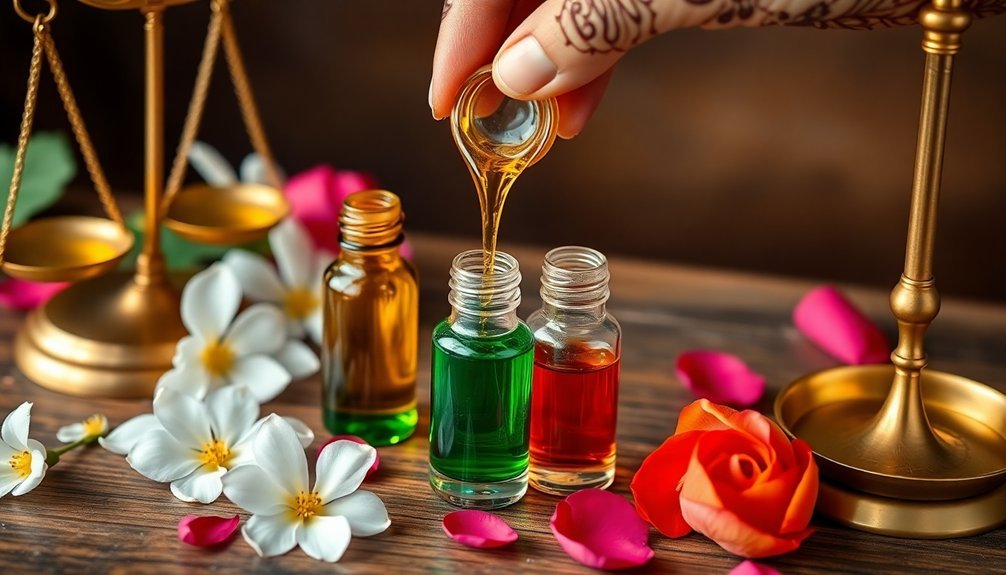
Understanding classic oriental blending formulas begins with two fundamental accords: ambery and mellis.
To create an ambery accord, you'll need to combine vanilla or synthetic vanillin with resins like myrrh, frankincense, and benzoin, then add synthetic musks for depth and longevity. The iconic Shalimar perfume exemplifies this structure with its use of ethyl vanillin.
For the mellis accord, blend benzyl salicylate with patchouli, clove notes (using eugenol), and lily of the valley (using hydroxycitronellal). You'll find this accord in classics like Youth Dew and Opium.
When combining these accords, follow a 1:1:1 ratio for balanced compositions, or adjust to 4:2:1 for sharper profiles. Always start with base notes, gradually building up through middle and top notes, testing on skin as you blend.
Tools and Equipment for Oriental Perfumery
Successful oriental perfume blending requires a well-equipped workspace with specific tools and safety equipment.
You'll need precise digital scales measuring to 0.001g, fragrance blotters for sampling, and borosilicate glass beakers in various sizes for mixing. Essential tools include both glass and disposable pipettes, glass stirring rods, and lab-quality filter paper with funnels.
For your safety, don't forget protective gear: gloves, safety glasses, masks, and appropriate clothing.
You'll also need proper storage solutions, including bottles with eye droppers and plain caps, plus small adhesive labels to track your creations.
For handling specialized oriental ingredients, which often include resins and thick oils, you'll want metal spatulas and magnetic stirrers.
Keep a notebook handy to document your blending ratios and experiments.
Measuring and Testing Oriental Blends
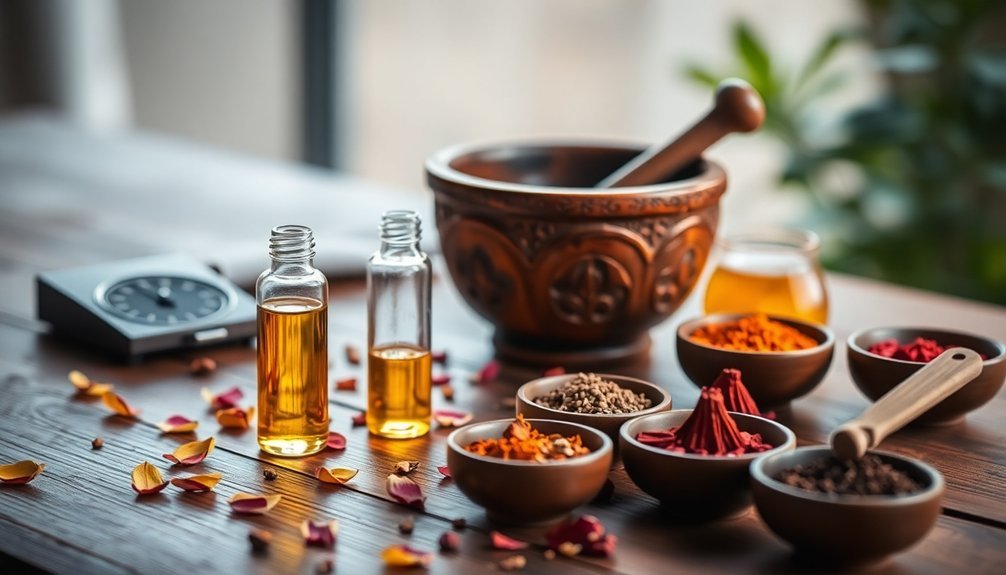
When measuring ingredients for oriental perfume blends, precision and consistency are paramount to achieving repeatable results.
You'll need a scale or graduated cylinder for larger quantities, while counting drops works well for smaller amounts. Dilute your essential oils and aroma chemicals in ethanol to 10% concentration for better control.
Start your blending process with base notes, then add middle notes, and finish with top notes. You can blend in one bottle or create separate layers before combining them.
Test your creations on fragrance strips, and don't forget to document every detail on a recipe card. Let your blend mature for at least a week to develop its full character.
Use coffee beans between testing sessions to reset your nose, and keep adjusting the blend until you've achieved your desired scent profile.
Adjusting Oriental Fragrance Ratios
The art of adjusting oriental fragrance ratios builds directly upon proper measurement techniques.
When working with oriental blends, you'll want to start with the classic 30-50-20 ratio: 30% top notes, 50% middle notes, and 20% base notes. However, you're not bound by these numbers.
If your blend needs adjustment, focus on making incremental changes. For overly sweet compositions, reduce vanilla, benzoin, or rose absolute proportions while introducing contrasting elements like frankincense or galbanum.
When diluting your materials, aim for 10% solutions to maintain precise control. For the final product, you'll typically want a 20% fragrance concentration for Eau de Parfum strength, whether you're using alcohol or fractionated coconut oil as your carrier.
Remember to document all adjustments in a spreadsheet for consistency and future reference.
Storage and Aging Oriental Blends
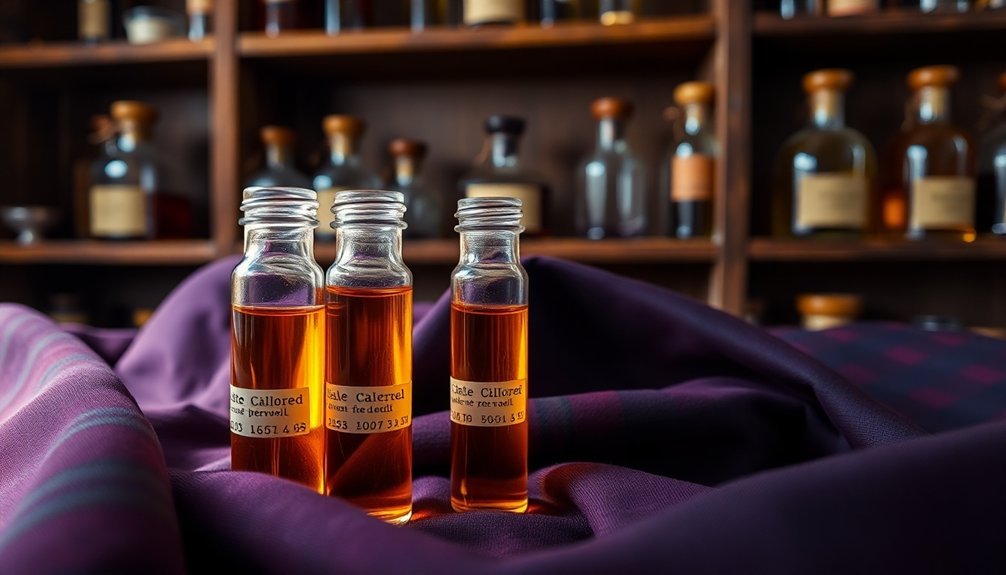
To preserve your oriental blends' rich notes, you'll need to store them in a dedicated dark cabinet or drawer at a consistent temperature between 15-20°C.
Your carefully crafted oriental blend will mature over 4-6 weeks, developing deeper, more harmonious layers as the ingredients marry together.
Keep the blend tightly sealed in an opaque glass bottle during this aging period, and resist the urge to open it frequently, as air exposure can compromise the precious volatile compounds.
Proper Storage Conditions
Proper storage conditions play an essential role in preserving your oriental perfume blends' complex notes and character.
You'll want to store your creations in a cool, dark environment with temperatures between 15-20°C (59-68°F). Keep them away from bathrooms and cars where temperatures fluctuate dramatically.
Choose opaque glass bottles for your blends, as they provide the best protection against light damage. Clear or frosted glass won't shield the volatile aromatic compounds from breaking down.
Always keep bottles tightly sealed and stored upright to prevent leakage. If you've kept the original packaging, use it for additional protection.
A temperature-controlled closet or cool pantry makes an ideal storage space.
Remember to rotate your collection regularly, using older blends first to maintain freshness across your entire collection.
Blend Maturation Timeline
Creating masterful oriental perfume blends requires a carefully monitored maturation period, during which your mixture will develop its full character and complexity.
You'll need to allow your blend to mature for 30 days to one year, depending on the concentration and types of oils used.
Store your blend in a cool, dark place to prevent degradation and minimize oxidation.
During this time, the alcohol and essential oils will permanently bond together, enhancing the stability and longevity of your oriental perfume.
You'll want to add antioxidants like Butylated hydroxytoluene to protect the blend throughout the maturation process.
Test your blend periodically to evaluate how the top, heart, and base notes are developing.
If needed, you can make adjustments after the initial maturation period to achieve your desired scent profile.
Common Oriental Perfume Mistakes to Avoid
While Oriental perfumes can enchant with their exotic allure, several common mistakes can diminish their magical appeal. You'll want to avoid overapplication, as it can overwhelm others and lead to olfactory fatigue. Instead, apply a small amount to your pulse points and build gradually if needed.
Don't mix incompatible scents that could clash with your Oriental blend. Stick to one signature fragrance and use unscented base products to maintain harmony.
When applying, moisturize your skin first to help the scent last longer, and resist rubbing your wrists together, as this can degrade the fragrance.
Store your Oriental perfume properly in a cool, dry place away from sunlight. When applying, hold the bottle at least 6 inches from your skin and let it dry naturally to preserve its exotic character.
Advanced Oriental Perfume Techniques
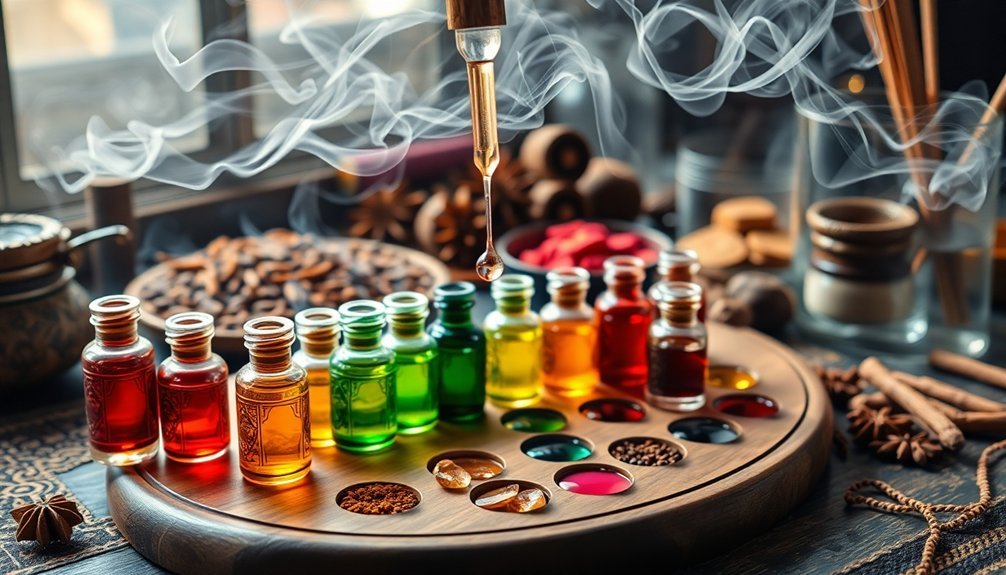
Advanced Oriental perfume blending requires mastery of three essential components: odoriferous elements, fixatives, and diluents. To create sophisticated oriental fragrances, you'll need to understand precise ratios like the 199:798:3 formula for oriental perfume oil, ethanol, and civet tincture.
For professional-grade oriental perfumes, focus on:
- Multi-stage blending of base, middle, and top notes separately before final combination
- Incorporating specialized oils like sandalwood, cedarwood, and patchouli at 1-5% concentration
- Using synthetic enhancers such as musk xylene and coumarin to stabilize the fragrance
Remember to let your blend mature for at least a week after vigorous shaking.
You can adjust the final concentration by varying the ratio of perfume oils to diluents, typically keeping diluents between 50-90% of the total composition.
Frequently Asked Questions
How Long Does It Take to Become Proficient in Oriental Perfume Blending?
You'll need 1-2 years of dedicated practice to become proficient in perfume blending. With consistent experimentation, you can master basic techniques, understand oil interactions, and develop your unique blending style.
Can Synthetic Ingredients Be Used Instead of Natural Oils?
Yes, you can use synthetic ingredients instead of natural oils. They'll often give you more stability, consistency, and cost-effectiveness in your blends, though you should consider potential health and environmental impacts.
What Certifications Are Required to Sell Oriental Perfume Blends Commercially?
You'll need IFRA certification, EU Cosmetic Regulation compliance, and local certifications from national regulatory bodies. Don't forget to register your business and obtain safety assessments for your perfume formulations.
How Much Should I Invest Initially in Oriental Perfumery Supplies?
You'll need around $20,000-30,000 initially to cover essential supplies, including raw materials, blending equipment, bottles, and storage. This'll give you enough to start creating and selling your first perfume collections.
Do Oriental Perfume Formulas Vary Significantly Between Different Cultural Markets?
Yes, you'll find significant variations in oriental perfume formulas across markets. Middle Eastern blends often feature more oud and amber, while Asian formulations typically emphasize lighter floral notes and local spices in their compositions.
In Summary
You've learned the fundamentals of oriental perfume blending, from essential ratios to advanced techniques. Now it's time to create your own signature scents. Remember to keep your ratios balanced, store your blends properly, and allow time for aging. Don't be afraid to experiment while respecting traditional formulas. With practice and patience, you'll master the art of crafting luxurious oriental fragrances that captivate the senses.
References
- https://achs.edu/blog/blending-101-the-art-of-pairing/
- https://www.freshskin.co.uk/blog/essential-oils-blending-guide/
- https://essencemixer.com/fragrance-oil-blending-calculator-free/
- https://www.newdirectionsaromatics.com/blog/the-theory-practice-of-essential-oil-blending/
- https://www.immortalperfumes.com/blog/how-to-make-perfume-eau-de-parfum
- https://groups.io/g/perfumemaking/topic/i_am_working_on_a_natural/40056617
- http://arcc-arch.org/wp-content/uploads/2014/12/ARCC2011_Lawrence Tech Conference Proceedings.pdf
- https://www.sylvaine-delacourte.com/en-us/guide/the-oriental-family
- https://www.iff.com/wp-content/uploads/2024/12/2023DoMoreGoodReport.pdf
- https://www.lesfleursdugolfe.com/en/all-about-the-concentration-of-perfumes/

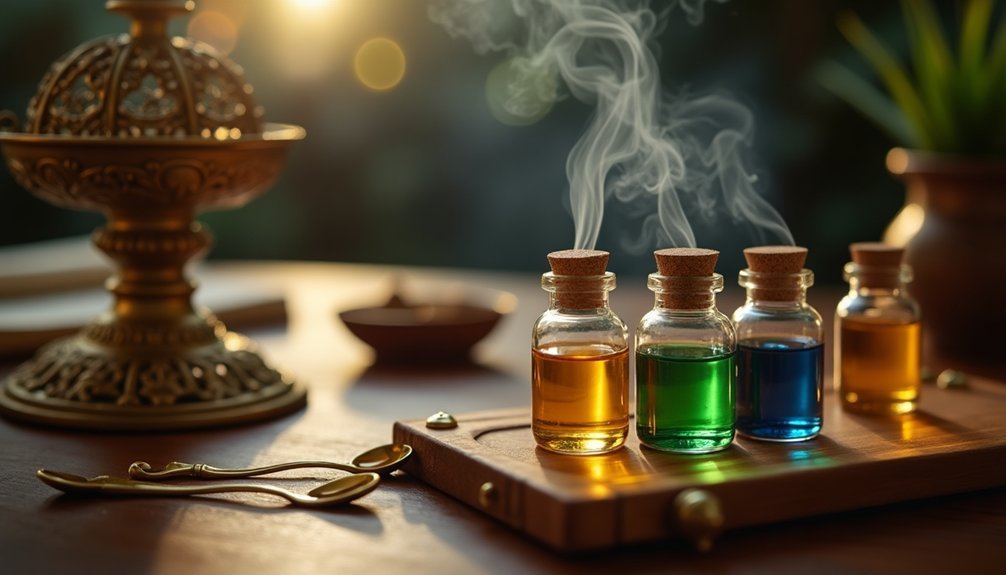
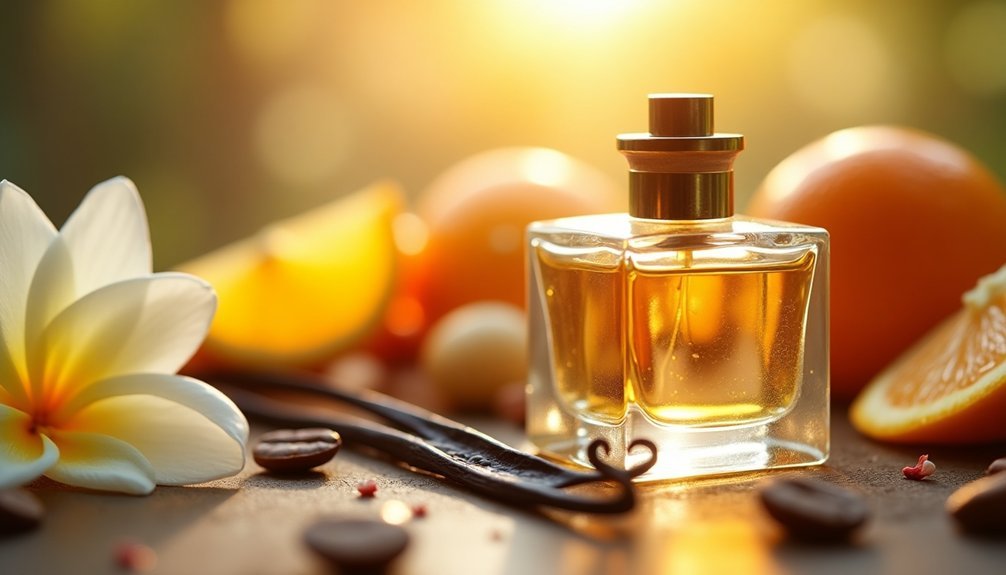

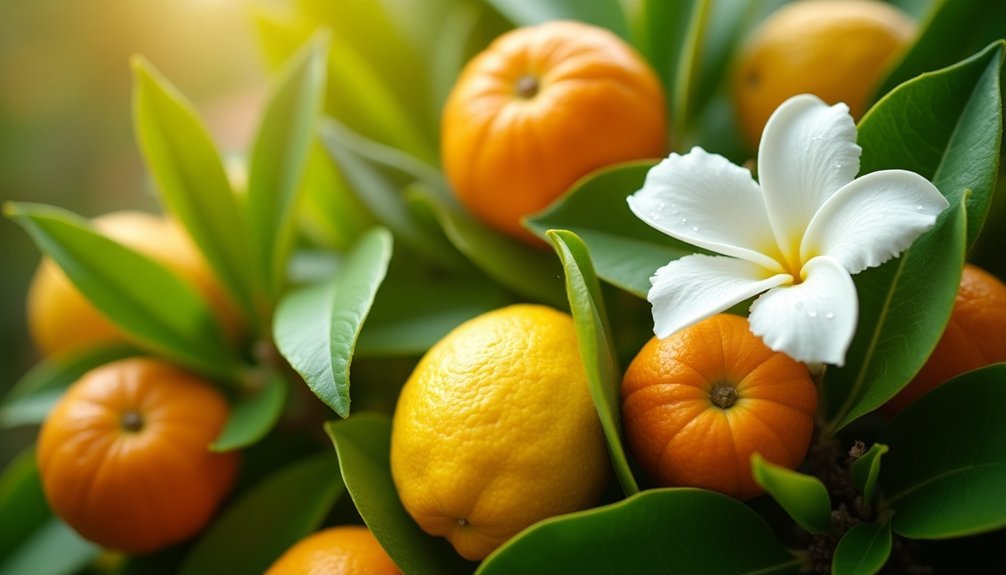
Leave a Reply